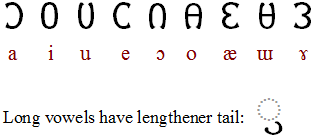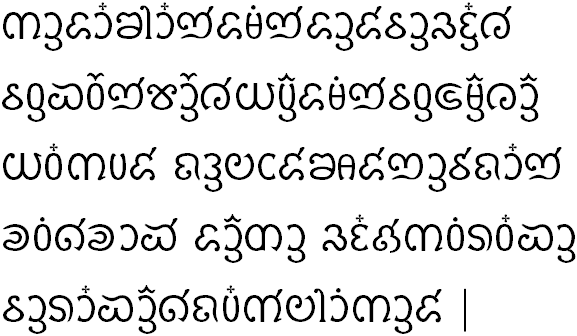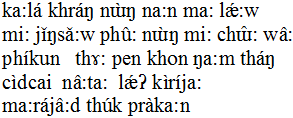The Tai Anphabet was designed to write languages of the Tai family, which includes Thai, Lao, Lanna, Tai Lue, etc. There is only one glyph per phoneme, and tone-marks sit upon the vowel. The aim was to have a writing system in a single channel, in a linear-alphabetic fashion. The shapes are derived from or reminiscent of various Tai scripts, especially Thai and Lanna. This is a revision of the 5th edition, tone-marks are given more modest form, and there is a new /m/.
Consonants
These are shown in the traditional Brahmic order. It may be noticed that the aspirates and sibilants are based on “high class” Thai forms; this follows from the direct historical relationship uncovered by William Gedney etal. The form for /s/ has slight similarity to that of the Ariyaka alphabet, and comes about by rotating and extending the /l/ letter. If a syllable is closed by a consonant (typically /k/, /t/, /p/ or a nasal), that glyph is given a final marker.
For the second consonant of a cluster, there is an optional form, similar to Lanna:
Vowels
Tai vowels are shown here with middle tone, ie. no tone-mark. They follow their consonant in all cases, unlike Indic vowels which end up all over the place.
Broadening diphthongs have their own letter; narrowing diphthongs and triphthongs are formed with a suffix.
Tones
There is no need for a Tone Rule based on consonant class, since tone contours are directly encoded. Tone-marks are placed upon the vowel (or first of a double-letter vowel). Here is /i/ with various common Tai family tones:
Sample text
This is taken from a fairy tale in the Thai language.
Once upon a time,
there was a young lady named
Phikul. She was a lovely person,
in heart, appearance, behaviour,
manners, everything.








